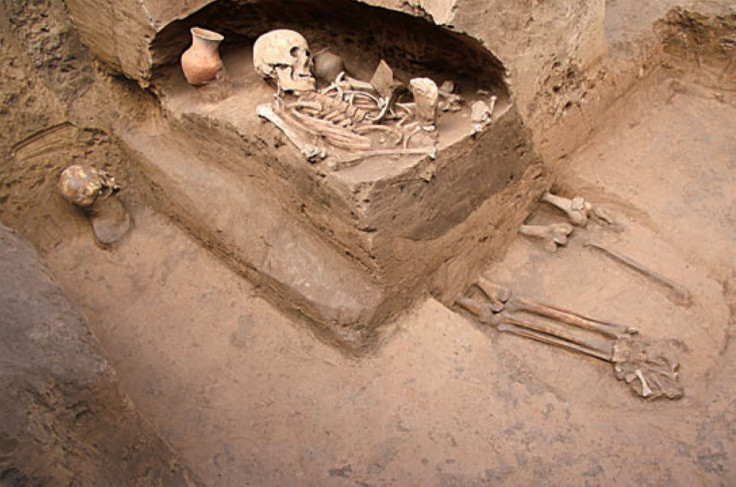Human sacrificial victims found in 4,000-year-old Chinese cemetery

A prehistoric cemetery containing hundreds of graves containing sacrificial human remains, many female, were discovered by archaeologists in northwest China.
The tombs near Mogou village are more than 4,000 years old – a time before writing was developed in this area, according to Live Science.
Nearly 300 tombs were excavated between August – November 2009, with hundreds more in archaeological digs between 2008-2011.
Most of the tombs are thought to belong to the Qijia culture, with entire families were buried together, with their heads facing northwest. Small chambers were found near the tombs with finely made pottery, decorated with incised designs, positioned near the dead.
They were buried with a variety of goods including necklaces as well as weapons such as bronze sabres, stone mace heads, axes, daggers and knives.
Gruesome findings were also unearthed in the burials. In one particular tomb, "the human sacrifice was placed on its side with limbs bent and its face toward the tomb chamber.
"The bones are relatively well preserved, and the individual's age at death is estimated at around 13 years," according to a report in the archaeological journal Chinese Cultural Relics.
Scientists are in the dark as to why the Qijia people engaged in human sacrifice or whom they sacrificed. One theory is that they may have conquered other groups, enslaving and sacrificing them, suggests Chen Honghai, professor of archaeology at Northwestern University in China.
Archaeologists also found what they call "bone divination lots," or artefacts that could have been used in rituals aimed at predicting the future. Bone divination was practiced widely throughout China.
A large number of oracle bones indicate that animals and humans were sacrificed in China to "purify" a royal ancestor, according to Herbert Plutschow from the University of California.
Diviners would present the deities with a choice between animal or human sacrifice, with men from the sheep-raising Ch'iang tribe the preferred source of victims.
One of the questions asked was: "Should the purification before Tsu-ting be done with the sacrifice of three oxen pairs and ten men of Ch'iang?"
© Copyright IBTimes 2025. All rights reserved.






















